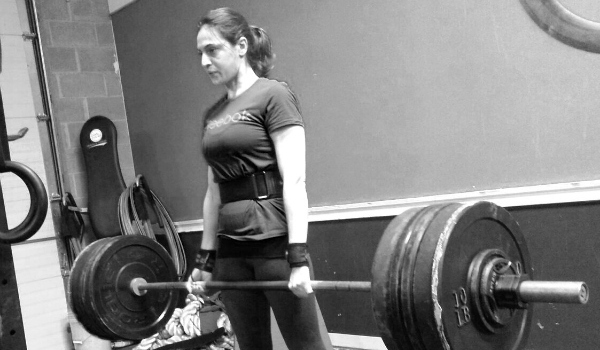If you’ve been to CrossFit you’ve no doubt seen their weight machines, and while they appear complex, are actually easy to use. There are also machines made for home use, but those in clubs and fitness centers are more sophisticated and produce better results.
Overview of Weight Machines
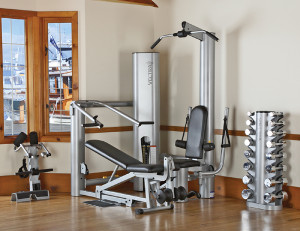 No matter what kind of weight machine you use, it basically involves two functions: adjusting your seat and pulling or pushing handles or a bar. The handles are usually hooked up to a lever, chain or cable that are attached to weight plates. These rectangular plates weigh 5 to 20 lbs. with a hole in the center. However, you can add more weight by sticking a “pin” or steel peg in the plate hole.
No matter what kind of weight machine you use, it basically involves two functions: adjusting your seat and pulling or pushing handles or a bar. The handles are usually hooked up to a lever, chain or cable that are attached to weight plates. These rectangular plates weigh 5 to 20 lbs. with a hole in the center. However, you can add more weight by sticking a “pin” or steel peg in the plate hole.
Although there are different kinds of weight machines in gyms you should try as many as you can. Even if they are made by the same manufacturer, some machines might feel more comfortable than the rest. When you find a machine you’re comfortable with, keep these tips in mind.
Make Adjustments
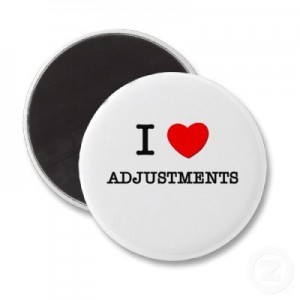 Don’t get on the machine immediately, as you need to make adjustments first. After all, if the guy who used the machine before you was taller, you’ll be very uncomfortable. Ask one of the gym trainers to adjust the weight machine so it fits you. Generally speaking, the joint you’re going to move (your knees for instance) has to be aligned with the machine’s moving joint. If the adjustment is correct, you won’t need to strain when using the machine. If you feel any sort of discomfort in your joints, stop and adjust the machine.
Don’t get on the machine immediately, as you need to make adjustments first. After all, if the guy who used the machine before you was taller, you’ll be very uncomfortable. Ask one of the gym trainers to adjust the weight machine so it fits you. Generally speaking, the joint you’re going to move (your knees for instance) has to be aligned with the machine’s moving joint. If the adjustment is correct, you won’t need to strain when using the machine. If you feel any sort of discomfort in your joints, stop and adjust the machine.
Assess the Weight Stack
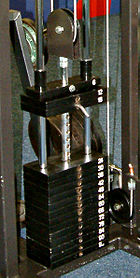 Never use a weight machine without checking first where the pin has been inserted. As you learn how to use weight machines, note the seat adjustment and weight and update them as your workout progresses. It will be easier to remember these details if you learn the names of the machines you’re using. Gyms have a label on their machines so it will be easier to remember.
Never use a weight machine without checking first where the pin has been inserted. As you learn how to use weight machines, note the seat adjustment and weight and update them as your workout progresses. It will be easier to remember these details if you learn the names of the machines you’re using. Gyms have a label on their machines so it will be easier to remember.
Keep Control
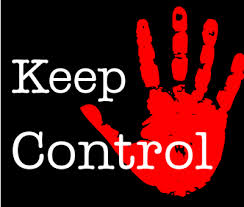 You control the machine, not the other way around. If the machine keeps clanging, you’re going to annoy other people in the gym, and it also means your lifts are too fast. To avoid this, make a couple of slow counts before lifting the weight up, and four slow counts when you put the weight down. Once you’re used to this, try the 2-2 count to speed things up a bit.
You control the machine, not the other way around. If the machine keeps clanging, you’re going to annoy other people in the gym, and it also means your lifts are too fast. To avoid this, make a couple of slow counts before lifting the weight up, and four slow counts when you put the weight down. Once you’re used to this, try the 2-2 count to speed things up a bit.
Tips for Changing Weights
Change the machine’s weight in the smallest increment possible, and if you can increase weights by half a plate instead 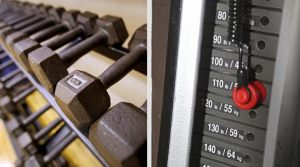 of a full plate, use that option. Incremental weight changes are necessary if you want to develop your muscles fully. Once you move on to heavy weights, get a spotter. Most gyms have spotters, or you can just ask any member of the health club staff. Tell your spotter how many reps you think you’re capable of lifting.
of a full plate, use that option. Incremental weight changes are necessary if you want to develop your muscles fully. Once you move on to heavy weights, get a spotter. Most gyms have spotters, or you can just ask any member of the health club staff. Tell your spotter how many reps you think you’re capable of lifting.
Safety Warnings
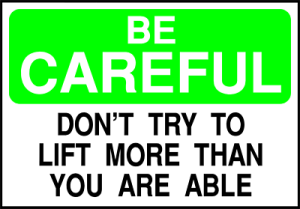 No matter what weight machine you’re using, be careful when handling weights, and do not pick weights without bending your knees. Gym etiquette also requires you not to carelessly drop weights once you’re done using the machine. Aside from the loud noise, there’s also the possibility that the weights might roll off and hit someone. You should also use both hands when lifting plates so you don’t drop it and hurt yourself.
No matter what weight machine you’re using, be careful when handling weights, and do not pick weights without bending your knees. Gym etiquette also requires you not to carelessly drop weights once you’re done using the machine. Aside from the loud noise, there’s also the possibility that the weights might roll off and hit someone. You should also use both hands when lifting plates so you don’t drop it and hurt yourself.
Other Things to Consider
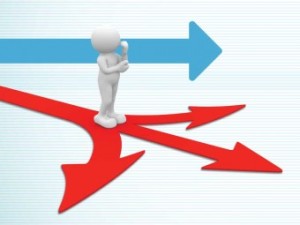 You should also make it a point to work all your muscle groups to achieve the best results. For this to work you’ll need to use different weight machines that will target all the major muscle groups in one workout. You’ll need to work out 3 times a week with 3 sets of 12 reps for each machine you use.
You should also make it a point to work all your muscle groups to achieve the best results. For this to work you’ll need to use different weight machines that will target all the major muscle groups in one workout. You’ll need to work out 3 times a week with 3 sets of 12 reps for each machine you use.
Don’t rest after using one machine and instead move on to the next one so while one muscle group is working another is resting. If you rest in between machines, you won’t get the maximum benefit. In addition, make sure that you’re using the right steps. For instance, don’t use your lower back when working out on the rowing machine, as the power has to emanate from your legs and to your upper body.
If you’re using the elliptical trainer, avoid pulling and pushing with your arms as it reduces the benefits for your legs. In addition, you’ll tire more quickly since your arms can’t work out as long as your legs. Your arms are a big help, but don’t forget that you’re supposed to be working on your legs
The nice thing about these weight machines is once you learn one, it’s easy to learn the rest. Whether you’re working in Crunch Fitness, Curves or somewhere else, you should have no problems putting these tips to good use.
